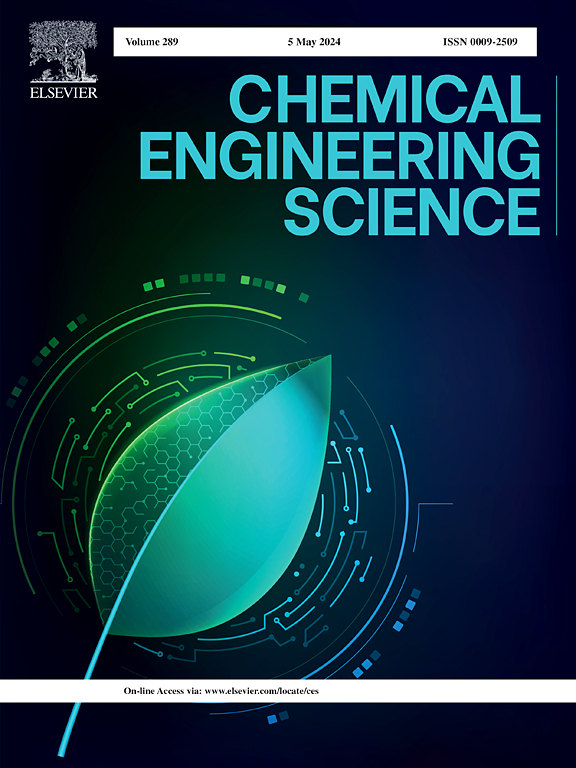Uv–vis diffuse reflectance spectroscopy-driven quantification of nano-MnO2 dispersion for catalytic thermal decomposition and combustion optimization in ammonium perchlorate composites
IF 4.1
2区 工程技术
Q2 ENGINEERING, CHEMICAL
引用次数: 0
Abstract
Ammonium perchlorate (AP) is widely used in propellants, acting the key power source of rockets and missiles. Improving the thermal decomposition efficiency of AP by introducing nanocatalysts is of great significance for enhancing the performance of propellants. However, nanoparticle agglomeration and the lack of reliable dispersion characterization methods hinder their practical application. The current challenge is to establish methods for accurately characterizing the dispersion of nanocatalysts in energetic materials and to develop efficient, agglomeration-resistant nanocatalysts. In this study, nano-MnO2/superfine AP composites with different nano-MnO2 dispersions were prepared and characterized by manual wet grinding and mechanical grinding methods. UV–Vis diffuse reflectance spectroscopy was innovatively employed to quantitatively assess the dispersion homogeneity of MnO2 nanoparticles, revealing a direct correlation between dispersion and catalytic activity. It was found that the nano-MnO2 dispersions in nano-MnO2/superfine composites can be effectively characterized according to the absorbance of solid UV–Vis of composites. The better the dispersion of nano-MnO2 is, the better the catalytic effect of nano-MnO2 on the thermal decomposition and combustion of superfine AP and superfine AP/Al composites will get. In the optimal dispersion state, the peak temperature of superfine AP decomposition can be increased by 105 ℃. Thus, the combustion intensity, flame area, combustion time and combustion temperature of superfine AP/Al composites are improved, which can be attributed to the highly dispersed nano-MnO2 accelerating the decomposition process of superfine AP. Mechanistic studies indicate that well-dispersed MnO2 facilitates redox cycling during AP decomposition, promotes intermediate conversion, and enhances oxygen release. On the other hand, nano-MnO2 dispersity is enhanced, agglomeration is reduced, desorption sites are increased, and thermal decomposition of superfine AP is enhanced. The results of this study demonstrate the importance of dispersibility of nanocatalysts to catalyze energetic materials and provide a method to describe the dispersibility of nanocatalysts. It is expected to provide reference for the development of characterization technology of nanocatalysts and broaden the wide and practical application of nanocatalysts in the field of energetic materials.紫外-可见漫反射光谱驱动的纳米二氧化锰分散在高氯酸铵复合材料中催化热分解和燃烧优化的定量研究
高氯酸铵(AP)广泛应用于推进剂中,是火箭和导弹的关键动力源。通过引入纳米催化剂提高AP的热分解效率对提高推进剂的性能具有重要意义。然而,纳米颗粒团聚和缺乏可靠的分散表征方法阻碍了它们的实际应用。目前的挑战是建立准确表征纳米催化剂在含能材料中的分散的方法,并开发高效、抗团聚的纳米催化剂。本研究制备了具有不同纳米二氧化锰分散体的纳米二氧化锰/超细AP复合材料,并通过手工湿磨和机械研磨两种方法对其进行了表征。创新地采用UV-Vis漫反射光谱定量评价二氧化锰纳米颗粒的分散均匀性,揭示了分散与催化活性之间的直接关系。研究发现,利用纳米二氧化锰/超细复合材料的固体UV-Vis吸光度可以有效表征纳米二氧化锰/超细复合材料中的纳米二氧化锰分散体。纳米mno2的分散性越好,纳米mno2对超细AP和超细AP/Al复合材料热分解燃烧的催化效果越好。在最佳分散状态下,超细AP分解的峰值温度可提高105 ℃。从而提高了超细AP/Al复合材料的燃烧强度、火焰面积、燃烧时间和燃烧温度,这可归因于高度分散的纳米MnO2加速了超细AP的分解过程。机理研究表明,分散良好的MnO2促进了AP分解过程中的氧化还原循环,促进了中间转化,增强了氧的释放。另一方面,纳米mno2分散性增强,团聚减少,解吸位点增加,超细AP热分解增强。本研究的结果证明了纳米催化剂的分散性对催化含能材料的重要性,并提供了一种描述纳米催化剂分散性的方法。期望为纳米催化剂表征技术的发展提供参考,拓宽纳米催化剂在含能材料领域的广泛和实际应用。
本文章由计算机程序翻译,如有差异,请以英文原文为准。
求助全文
约1分钟内获得全文
求助全文
来源期刊

Chemical Engineering Science
工程技术-工程:化工
CiteScore
7.50
自引率
8.50%
发文量
1025
审稿时长
50 days
期刊介绍:
Chemical engineering enables the transformation of natural resources and energy into useful products for society. It draws on and applies natural sciences, mathematics and economics, and has developed fundamental engineering science that underpins the discipline.
Chemical Engineering Science (CES) has been publishing papers on the fundamentals of chemical engineering since 1951. CES is the platform where the most significant advances in the discipline have ever since been published. Chemical Engineering Science has accompanied and sustained chemical engineering through its development into the vibrant and broad scientific discipline it is today.
 求助内容:
求助内容: 应助结果提醒方式:
应助结果提醒方式:


